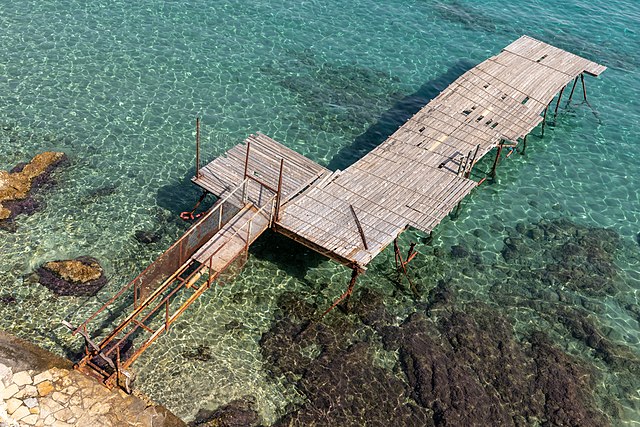A pier is a raised structure that rises above a body of water and usually juts out from its shore, typically supported by piles or pillars, and provides above-water access to offshore areas. Frequent pier uses include fishing, boat docking and access for both passengers and cargo, and oceanside recreation. Bridges, buildings, and walkways may all be supported by architectural piers. Their open structure allows tides and currents to flow relatively unhindered, whereas the more solid foundations of a quay or the closely spaced piles of a wharf can act as a breakwater, and are consequently more liable to silting. Piers can range in size and complexity from a simple lightweight wooden structure to major structures extended over 1,600 m (5,200 ft). In American English, a pier may be synonymous with a dock.
A wooden pier in Corfu, Greece
Print of a Victorian pier in Margate in the English county of Kent, 1897
A wharf, quay, staith, or staithe is a structure on the shore of a harbour or on the bank of a river or canal where ships may dock to load and unload cargo or passengers. Such a structure includes one or more berths, and may also include piers, warehouses, or other facilities necessary for handling the ships. Wharves are often considered to be a series of docks at which boats are stationed. A marginal wharf is connected to the shore along its full length.
The Barbours Cut Terminal of the Port of Houston, US. This cargo shipping terminal has a single large wharf with multiple berths.
Wharf under construction on the Upper Mississippi in Fountain City, Wisconsin
Quay in Dublin, Ireland. The Irish language term cé is a borrowing from Anglo-Norman kay, cail.
Stereoscopic view of Long Wharf in Boston, United States, c. 19th century, jutting into Boston Harbor






